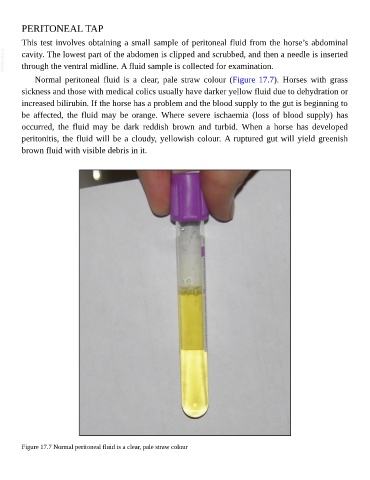Page 763 - The Veterinary Care of the Horse
P. 763
PERITONEAL TAP
This test involves obtaining a small sample of peritoneal fluid from the horse’s abdominal
VetBooks.ir cavity. The lowest part of the abdomen is clipped and scrubbed, and then a needle is inserted
through the ventral midline. A fluid sample is collected for examination.
Normal peritoneal fluid is a clear, pale straw colour (Figure 17.7). Horses with grass
sickness and those with medical colics usually have darker yellow fluid due to dehydration or
increased bilirubin. If the horse has a problem and the blood supply to the gut is beginning to
be affected, the fluid may be orange. Where severe ischaemia (loss of blood supply) has
occurred, the fluid may be dark reddish brown and turbid. When a horse has developed
peritonitis, the fluid will be a cloudy, yellowish colour. A ruptured gut will yield greenish
brown fluid with visible debris in it.
Figure 17.7 Normal peritoneal fluid is a clear, pale straw colour

